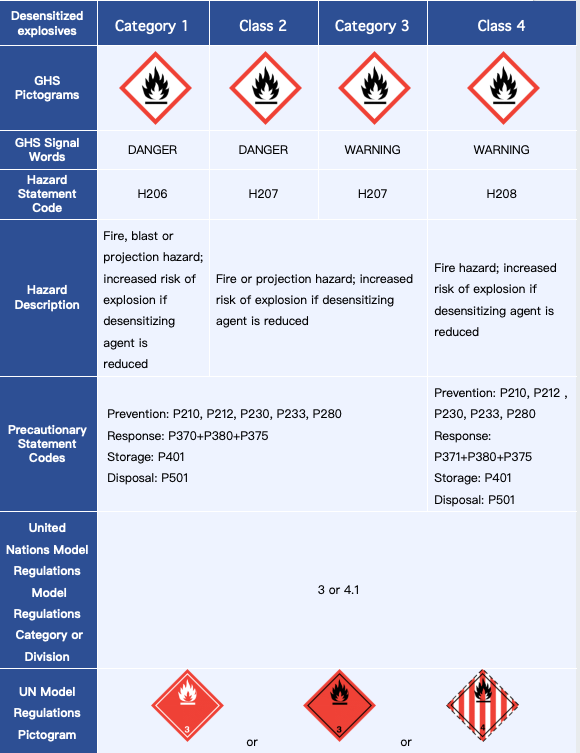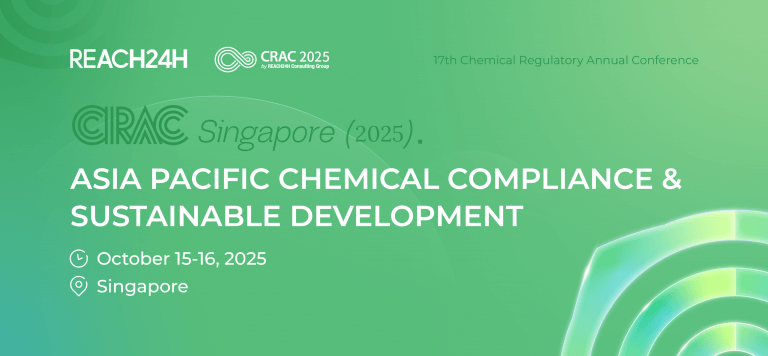News Brief
On June 30, 2025, the national standard "Rules for Classification and Labelling of Chemicals-Part 30: Desensitized Explosives" under the Ministry of Industry and Information Technology of the People's Republic of China (MIIT) was officially released. This important standard will formally take effect on July 1, 2026, providing clear guidelines for the development and safety management of related industries.
Background
In 2011, the State Council published and implemented the Regulations on the Safe Management of Hazardous Chemicals, introduced the Globally Harmonized System of Classification and Labeling of Chemicals (GHS for short), and based on the fourth revised edition of the GHS, issued a series of standards GB 30000.2-29, covering 16 physical hazard classes, 10 health hazard classes, and 2 environmental hazard classes. With the continuous updating of the GHS system, a new physical hazard class of "desensitized explosives" has been introduced internationally as early as the sixth revised edition of the United Nations GHS (the United Nations GHS is revised every two years, and is currently in its tenth revised edition). Therefore, the new standard of "Rules for classification and labelling of chemicals-Part 30: Desensitized explosives" aims at updating and revising China's relevant standard system in a timely manner, so as to bring it in line with the international standards and ensure the advancement and applicability of China's chemical safety regulations.
What Is the Standard "Rules for Classification and Labelling of Chemicals-Part 30: Desensitized Explosives"?
The standard is consistent with the technical contents of Chapter 1.4, Chapter 2.17, Annex 1 and Annex 3 in the United Nations Globally Harmonized System of Classification and Labelling of Chemicals (GHS) (10th revised edition). As an important part of the GB 30000 series of classification standards, this standard maintains coordination and unity with the existing series of standards, stipulating the terminology and definitions of desensitized explosives, classification standards, judgment logic and guidance, labeling elements, etc., providing a clear operational guide for relevant enterprises and regulatory authorities.
What Are Desensitized Explosives?
Desensitized explosives are substances and mixtures that are phlegmatized to suppress their explosive properties that they will not explode as a whole, and will not burn quickly, thus may be exempted from the hazard class “Explosives”.Desensitized explosives include solid desensitized explosives and liquid desensitized explosives.
Classification Criteria of Desensitized Explosives
Desensitized explosives are classified into four hazard categories based on parameters such as their exothermic decomposition energy and burning rate. The following procedure should be used to assess any explosive that has undergone desensitization treatment and determine whether it is a desensitized explosive.
Exclusion conditions
According to GB 30000.2, the substance or mixture does not contain explosive substances; or
Exothermic decomposition energy is less than 300J/g of the situation
Inclusion of conditions
It is not intended to produce a practical explosive or pyrotechnic effect; and
It has no mass explosion hazard (through the GB/T14372 series of tests); and
Corrected burning rate ≤ 1200kg/min (according to the burning rate of 4 categories).
In addition, stable nitrocellulose also belongs to this category
According to the corrected burning rate (Ac) for the division of hazard categories
| Category | Corrected burning rate (Ac) kg/min |
| 1 | 300≤Ac≤1200 |
| 2 | 140≤Ac<300 |
| 3 | 60≤Ac<140 |
| 4 | Ac<60 |
Allocation of Labeling Elements

Why Is Implementing the Desensitized Explosives Standard Important?
Fill in the gaps
Desensitized explosives are special chemicals whose explosive properties are suppressed by desensitization treatment, though they still pose a certain degree of danger. Previous classification systems did not clearly define such chemicals, but the new classification system allows for more precise classification and management.
Safeguard safety
The establishment of desensitized explosives in line with international standards and the characteristics of the chemical hazard classification inspection technology standards can better identify and manage potential risks. Additionally, after introducing the classification of desensitized explosives, labels and safety data sheets (SDS) for relevant chemicals must clearly indicate their hazard categories and precautionary measures. This will help ensure more effective safety measures during storage, transportation, and use, safeguarding personal safety.
Promote compliance
It provides relevant enterprises and regulatory authorities with a unified, clear technical foundation that reduces repeated testing and assessments, breaks down technical barriers, and improves the industry's overall management level.
Promote international trade
Convergence with international standards will enhance the international competitiveness of China's chemical industry and promote chemical exports and the industry's internationalization. Need support with China's GHS classification and labeling of desensitized explosives and other hazardous chemicals? Our experts provide end-to-end compliance services—from classification and SDS/label preparation to regulatory updates. Please feel free to contact us at customer@reach24h.com.





